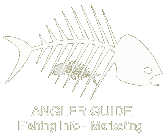 |  |
|
Navigation - Business - Great Lakes - Great Plains - Northeast - Northwest - Rocky Mountains - Southeast - Southwest - Technology - Trophy Catches
|
 The Gyro-Trac is a rubber-tracked machine with an eight-foot wide cutter head that cuts and mulches these two woody noxious weeds on the Yellowtail Wildlife Habitat Management Area (WHMA) and surrounding private lands. With its low ground pressure and excellent maneuverability, the machine is proving to be an effective habitat management tool. It quickly removes the dense infestations of Russian olive and salt cedar, which are threatening to replace the cottonwood galleries and riparian shrub habitats along the lower Shoshone and Bighorn Rivers.
The machine was contracted through Fire Trax, Inc. from Sheridan, WY to treat over 150 acres of riparian area.
Once cut and mulched, the exposed stumps are treated with triclopyr, an herbicide mixed with a basal bark oil to carry the chemical down into the root system and prevent the plants from resprouting. Managers are experimenting seasonally (fall and winter) to determine the optimum season for treatments. Backpack herbicide applications, mechanical treatments, biological control with insects and invasive plant management using cattle and Boer goat grazing have also been used as treatments.
These treatments are The Yellowtail CRM formed over seven years ago over their concern with the level of ecological degradation caused by invasive plants in the Bighorn and lower Shoshone River systems. The CRM is actively waging noxious plant war on Russian olive, salt cedar, and Russian knapweed on the Yellowtail WHMA and surrounding private landsŭthe Yellowtail CRM area. The area contains one of the largest contiguous cottonwood galleries in the western United States.
Contributors to this effort include the Wildlife and Natural Resource Trust Board, Sportsmen for Fish and Wildlife, National Wild Turkey Federation, Pheasants Forever, Shoshone Conservation District, Big Horn County Weed and Pest and the National Fish and Wildlife Foundation as well as contributions from private landowners, National Park Service, Bureau of Reclamation, Bureau of Land Management, and Wyoming Game & Fish Department.
Comments
«Back | News Home
| |||||||||||||||||||||||||||||||||||
 part of the Yellowtail Coordinated Resource Management (CRM) an ongoing invasive plant management effort. The Yellowtail CRM is a collaboration of landowners and managers, wildlife habitat and invasive plant professionals, sportsmen, and other interested parties.
part of the Yellowtail Coordinated Resource Management (CRM) an ongoing invasive plant management effort. The Yellowtail CRM is a collaboration of landowners and managers, wildlife habitat and invasive plant professionals, sportsmen, and other interested parties.